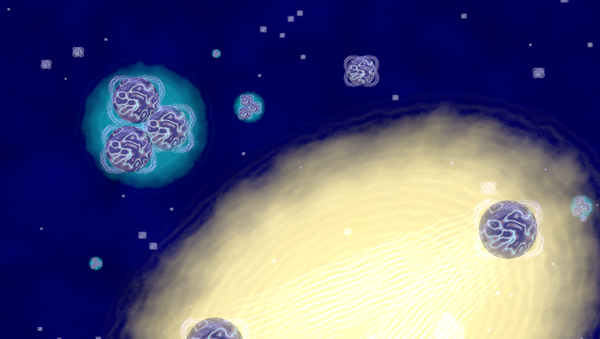In 1970, Vitaly Efimov analyzed a three-body quantum system in which the attraction between two bodies reduced such that they become unbound. His prediction was that instead of breaking up, the molecule consisting of three particles can support an infinite number of bound states with huge distances between the binding partners.
"Every classical notion as to why such a structure remains stable fails here", explains Professor Reinhard Dörner, head of the research group at the Institute for Nuclear Physics, and the bizarre prediction has fascinated physicists since, leading to the currently booming field of "Efimov physics."
However, until recently, experiments to prove the existence of the Efimov State had failed; The first experimental observation of Efimov's scenario was in 2006, when a team of scientists from the Universities of Chicago and Innsbruck reported observing the Efimov state with three cesium atoms, a soft metal used in atomic clocks, in a vacuum chamber at the ultracold temperature of a billionth of a degree above absolute zero.
The researchers produced a stable Efimov system consisting of three helium atoms, by pressing gaseous helium at a temperature of only eight degrees above absolute zero through a tiny nozzle into a vacuum. In this ultracold molecular beam, helium molecules with two, three or more helium atoms are formed. By diffraction of the molecular beam at a super-fine transmission grating, the physicist was able to spatially separate the trimers.

"This is the first stable Efimov system that has ever been discovered. The three-body system flies through the laboratory inside the vacuum chamber without further interaction and without the need for external fields", explains Professor Dörner. "Maksim Kunitski has conducted this ground breaking work in a laser laboratory at the Goethe University Frankfurt. He did not need a big machine to accomplish this."
"The Efimov state is not an exotic special case, but rather an example of a universal quantum effect that plays an essential role in many areas of physics", explains Kunitski, adding that examples can be seen in cold atoms, clusters, nuclear physics and recently also solid-state physics.



